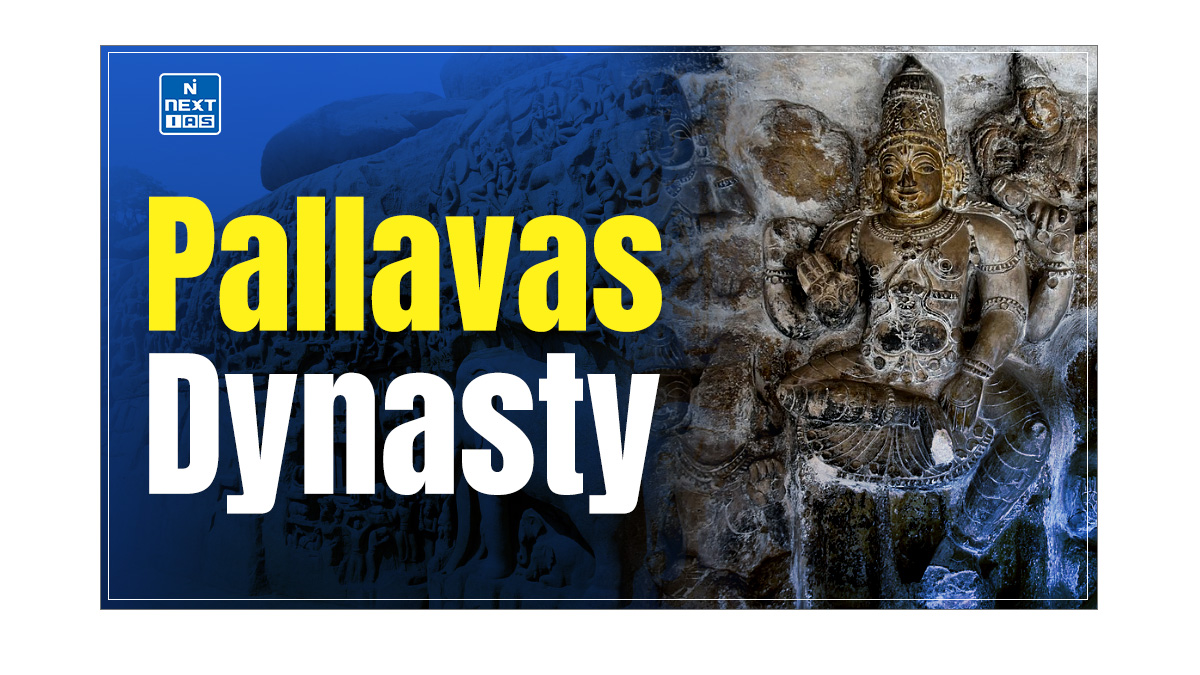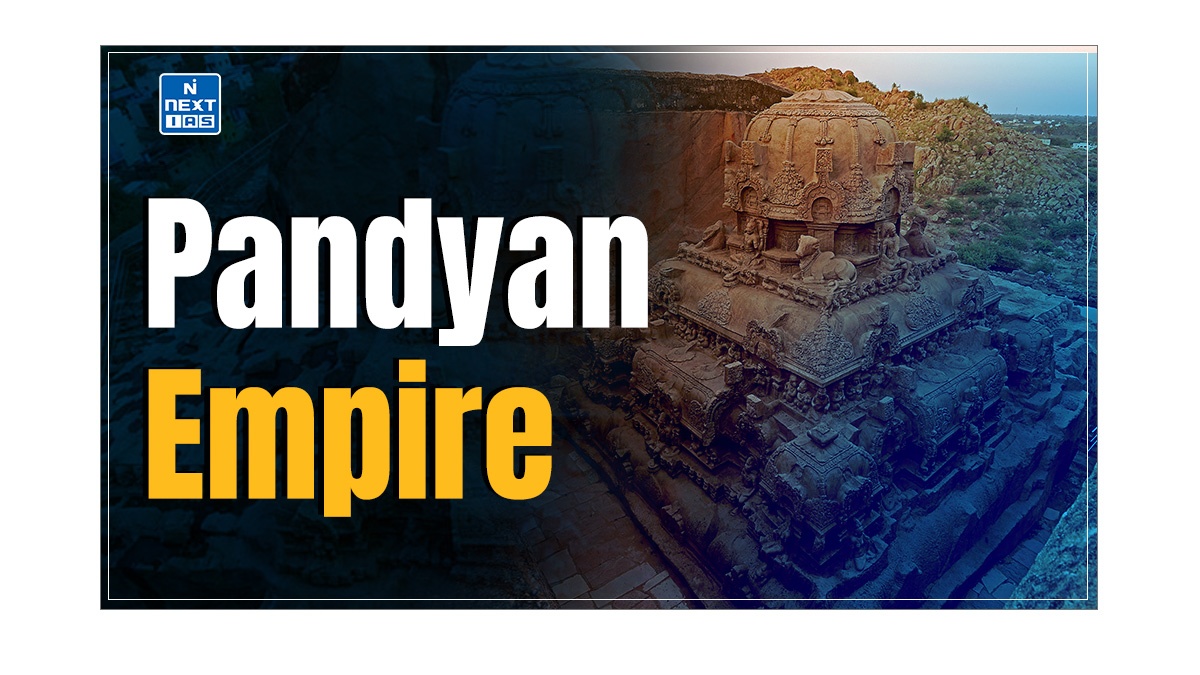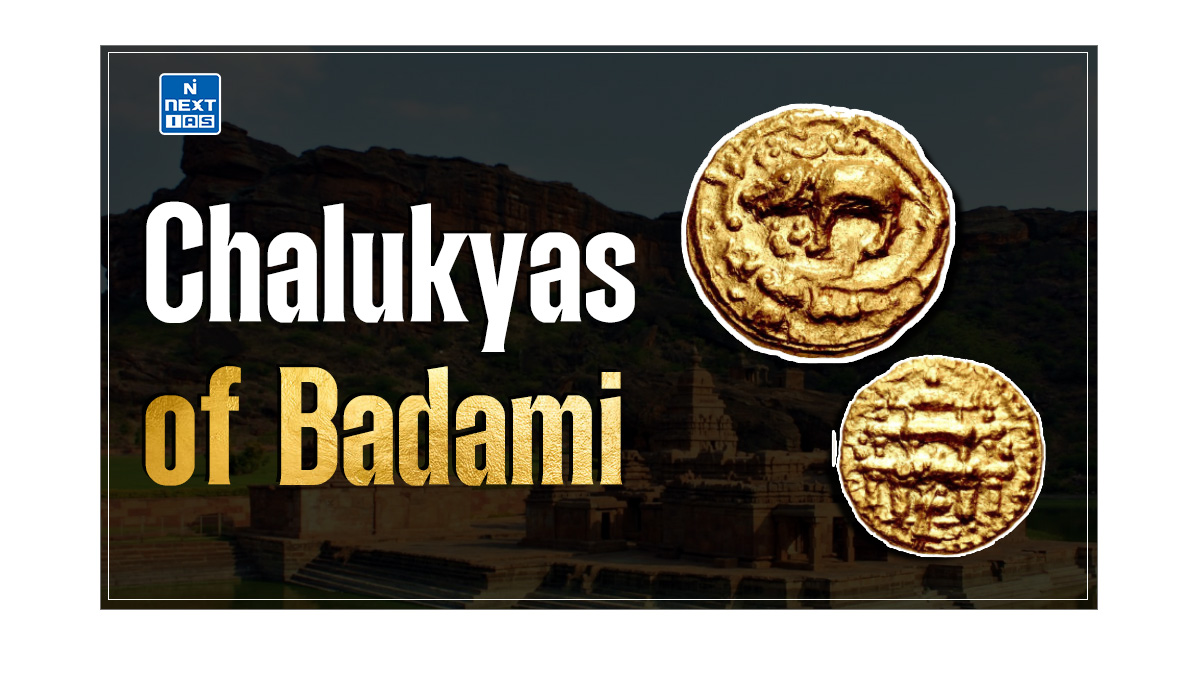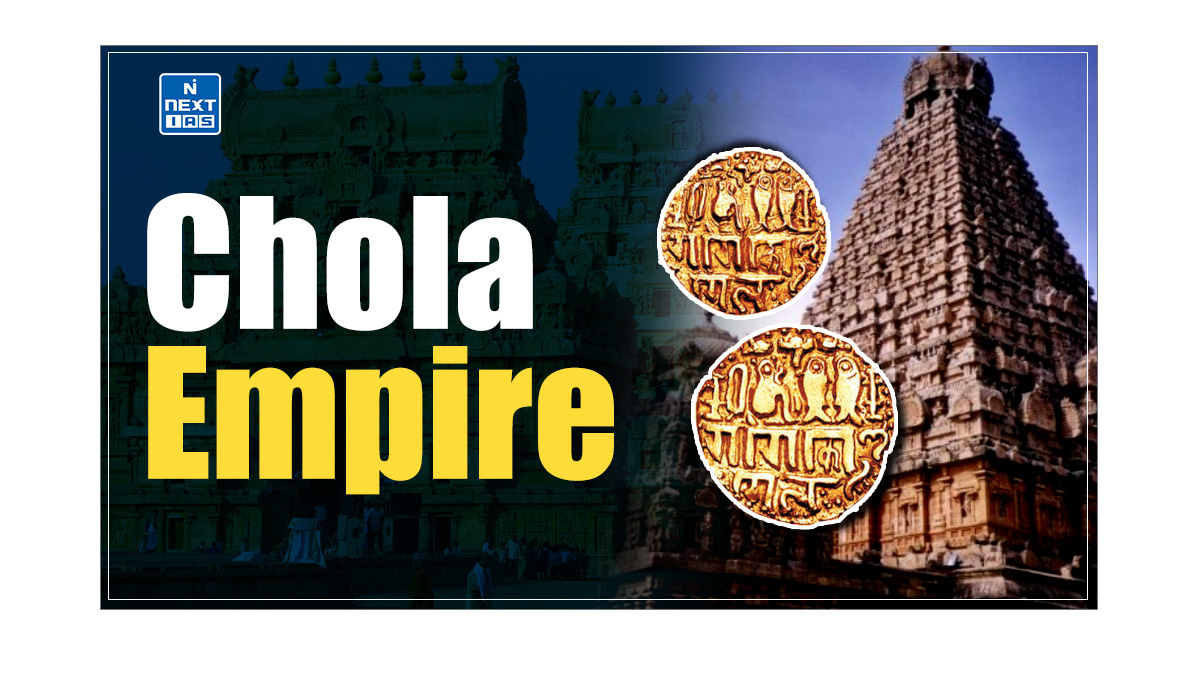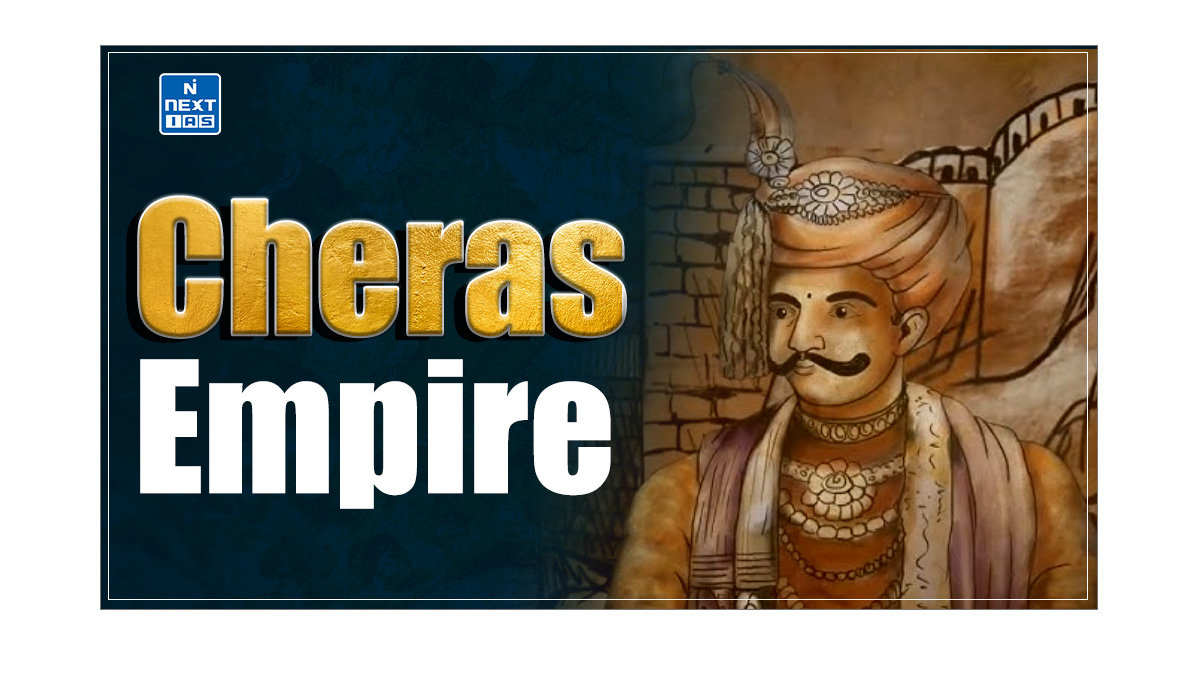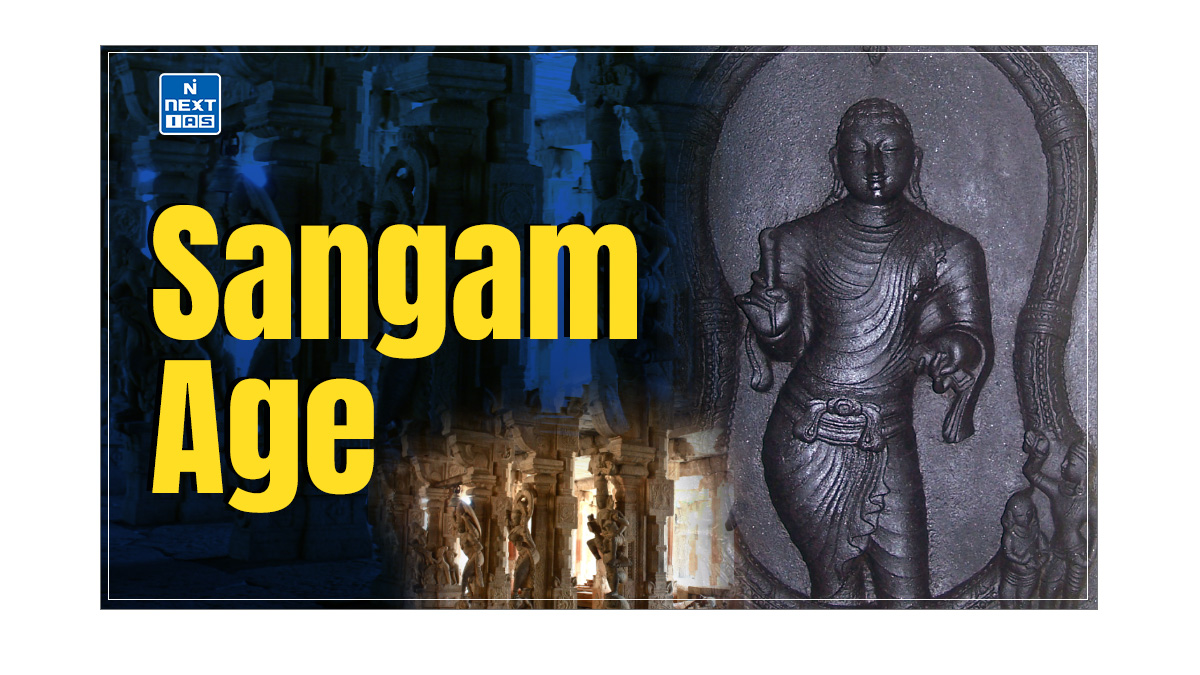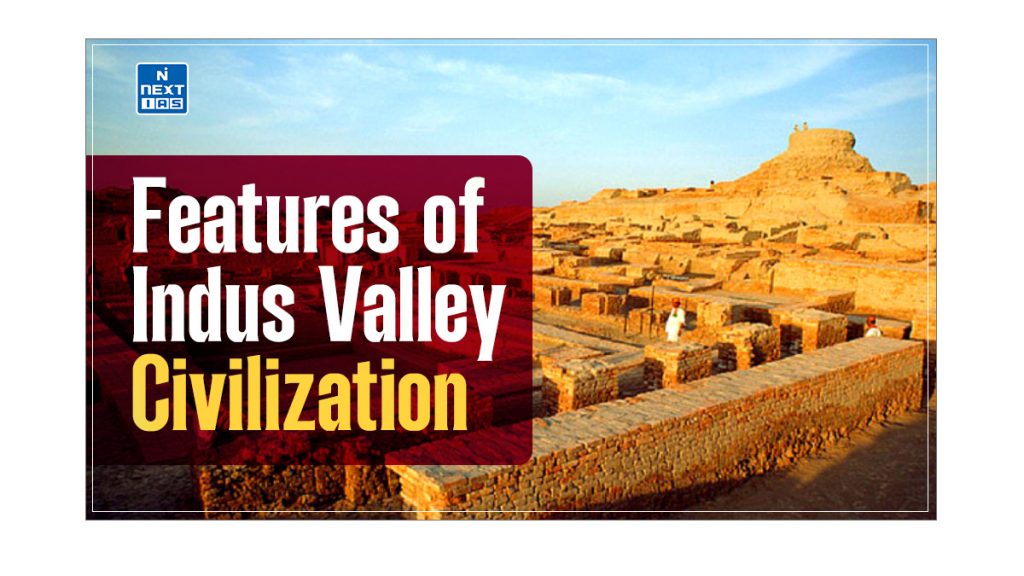
The Indus Valley Civilization (IVC) is renowned for its advanced urban planning, including grid-patterned cities and sophisticated drainage systems. It’s remarkable infrastructure and economic networks underscore its major role as an early urban centre. This article aims to study in detail the salient features of the IVC.
About Indus Valley Civilization
- The Indus Valley Civilization was one of the world’s earliest urban cultures, flourishing around 2500 BCE in present-day Pakistan and northwest India.
- Renowned for its advanced city planning, sophisticated drainage systems, and impressive architectural achievements, it stands out as a major centre of early civilisation in South Asia.
- This ancient civilisation is characterised by its well-organized cities, standardised brick constructions, and vibrant trade networks.
- The Indus Valley Civilization’s contributions to urban development and trade set foundational precedents for future civilisations.
Read our detailed article on the Indus Valley Civilization (IVC).
Features of Indus Valley Civilization
The salient features of the Indus Valley Civilization are:
- V. Gordon Childe was one of the earliest to make attempts to define a city in Harappa and Mohenjodaro.
- He described them as symbols of a revolution that marked a new economic stage in society’s evolution.
- He said this “Urban Revolution” was neither sudden nor violent. It was a gradual socio-economic change.
- While the Indus civilisation shared many general features with contemporary Bronze Age cultures, such as the Sumerian civilisation of Mesopotamia and Old Kingdom Egypt, it had its own distinct identity.
- For one thing, with a geographical spread of more than a million square kilometres, this was the largest urban culture of its time.
- Unlike in Mesopotamia and Egypt, no grand religious shrines, magnificent palaces, or funerary complexes were constructed for the rulers.
The features of the Indus Valley Civilization have been discussed in detail in the following section.
Administration of Indus Valley Civilization
- The Indus Valley Civilization exhibited a highly organised administration through its urban planning and infrastructure.
- The intricate layout of cities, including large public buildings like the Great Bath and Granaries, suggests the centralisation of power, which points to a coordinated governance system.
Political Organisation of Indus Valley Civilization
- Indus Valley Civilization structures’ size and architectural intricacies, such as the Great Bath, Granaries, elaborate road planning, and flawless large-scale drainage system, are believed to have been made possible by a robust and centralised polity.
- In many places, raised habitations at the city’s centre suggest that essential individuals, such as headmen and their council, may have lived there.
- The specialised economic organisation and socio-cultural unity in these early civilisations have surprised historians, as the sophistication in craftsmanship could only have been achieved under the patronage of leaders.
Town Panning of Indus Valley Civilization
- According to archaeologists Mortimer Wheeler and Stuart Piggot, the Harappan towns exhibited a remarkable unity of conception.
- Although established in primitive times, the cities of Indus Valley were characterised by elaborate town planning with a grid pattern orientation of streets and houses, laid out north-south and east-west.
- The unity observed in the houses, temples, granaries, and streets was significant. Each city was divided into a raised citadel and a lower town. Harappa, Mohenjodaro, and Kalibangan settlements had a citadel of Indus Valley Civilization on the west side and a lower town on the east.
- In contrast, Lothal in Gujarat was a rectangular settlement surrounded by a brick wall without internal division. Harappa and Mohenjodaro used baked bricks, while Kalibangan used mud bricks.
- The bricks were standard sizes, cubical, and sun-dried, with some sites using stones for construction.
- The most important public place in Mohenjodaro was the Great Bath, which featured a tank in the citadel mound, flights of steps, and side rooms for changing clothes.
- The floor was made of burnt bricks and watertight with gypsum. In Mohenjodaro, the Granary was the largest building, while Harappa had six granaries and working floors for threshing grain. Harappa also featured two-roomed barracks.
- The drainage system of Mohenjodaro was advanced, with each house having its own courtyard and bathroom.
- Street drains were equipped with manholes, and in Kalibangan, many houses had their wells. No other Bronze Age civilisation emphasised health and cleanliness as much as the Harappa did.
Great Bath of Indus Valley Civilization
- The Great Bath of Indus Valley Civilization is one of the most famous structures found at the archaeological site of Mohenjo-daro, dating back to around 2500 BCE.
- The Great Bath of Indus Valley Civilization is believed to have been used for ritual bathing, indicating the importance of cleanliness and water in the religious and social practices of the time.
Granaries of Indus Valley Civilization
- The Granaries of Indus Valley Civilization were large, strategically built structures for storing surplus grains. They were found in cities like Harappa and Daro.
- The Granaries of Indus Valley Civilization highlights the civilisation’s advanced agricultural practices and central management of food resources.
Citadel of Indus Valley Civilization
- The Citadel of Indus Valley Civilization was a fortified area on a raised platform. It served as a centre for administration and possibly religious activities.
- The Citadel of Indus Valley Civilization reflects the civilisation’s advanced urban planning and societal organisation, providing insights into its governance and cultural practices.
Economic Life of Indus Valley Civilization
- A stable system of agriculture, supplemented by animal husbandry, hunting, and plant gathering, provided economic sustenance to urban networks. Trade and commerce were significant parts of their economy.
- Various items, such as gold, silver, and diamonds, were imported, and finished jewellery, handicrafts, and toys were exported.
- The Indus Valley Civilization people were the pioneers in cotton cultivation. Greeks called the Indus Valley Civilization ‘Senden’ or land of cotton.
- The Lothal dockyard also testifies to the existence of long-distance trade.
Domestication of Animals of Indus Valley Civilization
- Although Harappan people were primarily agriculturists, they also reared animals on a large scale. Domesticated animals included oxen, buffaloes, camels, asses, goats, boars, sheep, dogs, and cats.
- Oxen, buffaloes, camels, and asses served as beasts of burden for transportation and agriculture. At the same time, goats, boars, and sheep were used for culinary purposes, with their bones found in many settlements. Dogs and cats were kept as pets, supported by footprints in the settlements.
- The humped bulls were particularly favoured, and bones of rhinoceros and elephants found in settlements suggest they might have been hunted and consumed. Evidence of ritual sacrifices involving animals is found in the fire pits at Kalibangan.
- Horse remains are mainly absent from Harappan sites, with only a few remains found in the port city of Surkotda and a doubtful terracotta figurine from Lothal and Banawali.
- Harappan culture was not horse-centred. Unlike Mesopotamian cities, the Harappan people in Gujarat cultivated rice and domesticated elephants.
Agriculture of Indus Valley Civilization
- In earlier times, the Indus region was lush with vegetation and received significant rainfall, contributing to its agricultural prosperity.
- The annual inundation of the Indus River replenished the region’s fertility.
- The Indus Valley people sowed seeds in November, and when the river’s waters subsided, they harvested barley and wheat.
- They utilised ploughshares and stone sickles for cultivation and harvesting. While irrigation was primarily rain-fed, check dams were constructed on rivers, though there is no evidence of canal irrigation.
- Two varieties of wheat are frequently found at Harappan sites. They also grew dates, mustard, sesame, and leguminous plants like peas. Granaries were built in cities such as Harappa and Mohenjodaro to store food grains, likely collected as taxes from peasants and used for wage payments.
- The Indus people were among the earliest to produce cotton, and a ploughed field has been discovered at Kalibangan in Rajasthan.
Trade and Commerce of Indus Valley Civilization
- Most Harappan cities needed more raw materials for the final products they manufactured.
- There was no concept of currency, and trade was conducted through the barter system. The Harappan people exchanged finished goods for raw materials.
- The Harappans engaged in trade with other world civilisations, such as Mesopotamia and Egypt, as well as with local communities and contemporary tribals.
- They had commercial links with settlements in Rajasthan, Karnataka, Afghanistan, and Iran and established a trading colony in northern Afghanistan, facilitating trade with Central Asia. Numerous seals were found during this period.
- The Harappans participated in long-distance trade involving Lazuli and established shell work, bangle-making, and bead-making factories in Kalibangan, Chanhu-daro, and Lothal.
- These were significant exports. Mesopotamian records from around 2350 B.C. mention trade relations with Meluhha, the ancient name for the Indus region.
- Harappan seals and other materials have been discovered in Mesopotamia, extending trade to Sumeria, Babylon, and Egypt.
Weights and Measures of Indus Valley Civilization
- Due to constant trade exchanges, the need for uniform weights and measures arose. The Harappans standardised these during the Mature Harappan Phase. Numerous Mesopotamian cylindrical seals have also been found at Harappan sites.
- The weight system was primarily based on multiples of 16 (e.g., 16, 64, 160, 320, and 640). The Harappan metric system had a base of 16.
- The Harappans practised the art of measurement, using sticks for this purpose. Many such sticks have been excavated.
Transportation of Indus Valley Civilization
- With many trade exchanges, a need for easy and quick transportation of goods arose.
- With the development of the wheel and the domestication of Oxen and bulls, the mode of transport changed from foot to carts and chariots.
- The transport of the goods was also done on camels and asses, which were the beasts of burden.
- For long-distance trade through seas, boats would have been used. Such evidence was also found in the depiction of boats on the seals.
Social Life of Indus Valley Civilization
- Archaeological findings, such as sculptures, figurines, and seals, can reveal the social life of Indus Valley civilisations.
- Their society was divided into two groups: the people who lived in the Citadels and those who lived in the cities.
Nature of Society of Indus Valley Civilization
- It was an egalitarian society, as figurines show the prominence of both male and female forms.
- In some figurines, bearded men are depicted wearing feminine costumes, suggesting a possible equal status for men and women.
- The people of the Indus Valley worshipped both male and female deities. The seal of the male deity Pashupati or Shiva, as well as the figurine of the Mother Goddess, have been found in the excavation of Mohenjo-Daro.
- Different from the Egyptian civilisation, where the daughter succeeded the queen, no such succession knowledge has been found for the Indus Valley regions.
- Thus, the nature of the society—whether patriarchal or matriarchal—remains inconclusive.
Food Habits of Indus Valley Civilization
- The excavations provide little information about the food habits of the Indus Valley civilisation, as no deciphered proof is present. We can infer very little about their food habits only from what remains have been found in the places excavated.
- The food choices were region-specific. Wheat and barley were the staple foods for the Harappans in Punjab and Sind. The Harappans of Gujarat preferred millets, and those of Rajasthan preferred barley.
- They supplied fat and oil from sesame seeds, mustard, and domesticated animals like buffalo, camels, sheep, and goats. The preference for fruits can be inferred from the seeds of jujube and dates found in excavations.
Burial Practices of Indus Valley Civilization
- Burials were a crucial religious activity among human groups. The Harappans buried their dead in a north-south orientation, laying them on their back.
- It is believed that the Harappans believed in an afterlife, and so many pots were kept with the dead.
- Depending on the deceased’s status, various articles were placed on the burial site, reflecting social stratification in Harappan society.
- Generally, the Harappan burials were in brick or stone-lined rectangular or oval pits. The body was usually interred, clothed, shrouded, or in a wooden coffin.
- Along with pots, the bodies were buried with jewellery, such as bangles made from shells and steatite beads. Men typically wore earrings, and copper mirrors found among females indicate gender-specific grave goods.
- Harappan burials were not as grand as those in Egyptian or Mesopotamian civilisations, and tombs were not found in Harappan sites.
- There were variations in burial practices: in Kalibangan, small circular pits containing large urns without skeletal remains, accompanied by pottery, suggest that the dead might have been burned.
- In Lothal, some burial sites have both a male and female buried together.
Script of Indus Valley Civilization
- The Harappans’ written script still needs to be deciphered. Although attempts have been made to connect it with Sanskrit and Dravidian languages like Tamil and Sumerian, conclusive results have yet to emerge.
- Like the ancient Mesopotamians, the Harappans invented the art of writing but did not create long inscriptions like the Egyptians or Mesopotamians. Most inscriptions were recorded on seals and contained only a few words.
- Their script was ‘Boustrophedon’, meaning alternate lines were written in opposite directions. The script comprised only pictographs, with about 250 to 400 symbols discovered.
- The Indus Valley script was believed to be indigenous to the Indus Valley civilisation and had no connection to other civilisations.
Religious Practices of Indus Valley Civilization
- With much written history, it is easier to determine the Indus Valley Civilization’s religion, beliefs, and practices concretely.
- Whatever proof we have in the Indus Valley script is not yet decipherable, which supplements the above problem.
- The only knowledge gained until now is from the excavated figurines, seals, and fire alters of the Harappan Civilization.
Rituals of Indus Valley Civilization
- Scholars believe some structures, like the Great Bath, may have a ceremonial significance.
- The Great Bath is a humongous structure with elaborate bathing arrangements. It is adjacent to another large structure believed to be a residence of the college of priests or the main priest.
Deities of Indus Valley Civilization
- Several Terracotta figurines and seals were found in the excavations of Harappa, suggesting that in Harappan society, the main deities in most of the figurines and seals were proto-Shiva and Mother Goddess.
Proto Shiva
- In many seals in the Harappan excavations, a deity wearing buffalo-horned headgear is shown sitting in a yogic posture.
- Goats, elephants, tigers, and antelope surround the deity. In some seals, a sprouting plant emerges between their horns.
- Sir John Marshall identifies him as Pashupati (Lord of Beast) or the Proto Shiva.
- The male deity is represented on a seal. The god has three horned heads and is seated like a Yogi, placing one foot on the other.
- The god is surrounded by an elephant, a tiger, and a rhinoceros, and a buffalo is below his throne.
- Two deer appear at his feet.
- In another seal, the deity is standing nude between the branches of a Pipal tree. Snakes accompany the Yogic figure in a seal.
- The phallic emblem of Shiva (Lingam) has been found in some of the Harappan settlements.
Mother Goddess of Indus Valley Civilization
- A large number of terracotta figurines have been found in Harappan excavations.
- The female figures are often depicted with a wide girdle, loincloth, necklaces, and fan-shaped headgear. In some figurines, female figures are shown with infants.
- Notably, one figurine depicts a female growing a plant from her embryo, which scholars suggest may be related to the Harappans treating the figurine as a mother goddess.
- This depiction could symbolise the goddess representing the earth and being worshipped as a fertility goddess.
Tree Worship of Indus Valley Civilization
- Several seals have been excavated from Harappa, and they depict a figurine looking through the branches of a pipal tree.
- Scholars believe these to be the tree spirits worshipped by the Harappans. In many seals, this spirit is shown as being worshipped by others.
- In some seals, an animal is depicted in front of the tree. In one seal, seven figures, including a horned figure, stand in front of the Pipal tree.
- According to scholars, the horned figure may be proto-Shiva, and the seven figures may represent the seven great sages or mothers of Indian mythology.
Animal Worship of Indus Valley Civilization
- During the Harappan Civilization, many animals, such as bulls, tigers, rhinoceros, goats, elephants, and antelope, were worshipped.
- This is evident from numerous terracotta figurines and seals that were excavated.
- Many composite animal and human seals have been discovered, which might depict the worship of these animals.
- Some seals feature animal representations with parts of humans, such as Narasimha, an Indian mythological figure with a human’s foreparts and the tiger’s hindquarters.
- The most crucial seal features a one-horned unicorn, possibly identified with a rhinoceros, while the humped bull is also significant.
- Additionally, many figures on seals depict composite creatures combining parts of rams, bulls, and elephants.
Fire Altars of Indus Valley Civilization
- The Harappans at Kalibangan have followed different religious practices.
- A series of brick-lined pits over raised brick platforms have been found in the citadel.
- They contain ash and animal bones. Some scholars classified these as fire alters.
- This part of the citadel was a ritual centre where fire rituals and animal sacrifices were performed.
- Many of the houses also have these fire alters. Some of these fire alters have also been found in Lothal. Amulets have been found in large numbers.
- The Harappans probably believed that ghosts and evil forces could harm them and used amulets against them.
Science and Technology of Indus Valley Civilization
- The Harappan Civilization was way ahead of its time, proving it had made giant strides in science and technology.
- The art of looming and weaving, metallurgy, the lost-wax technique of making sculptures, and the making of ornaments—all of these activities depicted their gained understanding of science and technology.
Metallurgy of Indus Valley Civilization
- The Harappan people had advanced knowledge of metallurgy and could perfectly make bronze. The Dancing Girl is a renowned cultural artefact and a masterpiece in bronze sculpture, notable for its intricate detail. Apart from a necklace and bangles, the figure is depicted as naked.
- A few Harappan stone sculptures have been discovered, including a steatite statue adorned with an ornamented robe over the left shoulder and a woven fillet keeping the short locks tidy at the back of the head.
- The raw materials for bronze were not readily available locally; copper was sourced from the Khetri copper mines in Rajasthan, and tin came from Afghanistan.
- Bronzesmiths were a crucial group of artisans in Harappan society. They demonstrated their expertise in metal blending, casting, and other sophisticated techniques for creating bronze sculptures.
Other Crafts of Indus Valley Civilization
- Several other important crafts flourished in the Harappan towns. A piece of woven cloth has been recovered from Mohenjodaro, and textile impressions were found on several objects. Spindle whorls were used for spinning.
- Immense brick structures suggest that brick-laying was an important craft. The Harappans also practised boat making.
- Seal making and terracotta manufacture were also essential crafts. Pottery making was also a famous occupation.
Pottery of Indus Valley Civilization
- The Harappans were masters of the potter’s wheel and produced remarkable pottery.
- The pottery of Indus Valley Civilization was made and painted in various colours. It had beautiful designs of nature, such as trees, birds, fish, and animals, images of men, and geometrical shapes, like circles and lines.
- The pottery of Indus Valley Civilization was in many shapes, such as pedestals, goblets, cylindrical vessels perforated, and various bowls and dishes.
Seals of Indus Valley Civilization
- The seals of the Indus Valley Civilization were the greatest artistic creations of the Harappan culture.
- About 2000 seals have been found; of these, a great majority carry short inscriptions with pictures of one-horned bulls, buffaloes, tigers, rhinoceros, goats, and elephants.
- Merchants used the seals of the Indus Valley Civilization for trade purposes.
Terracotta Figurines of Indus Valley Civilization
- We have many figurines made of fire-baked earthen clay, commonly called terracotta. These were either used as toys or objects of worship.
- They represented birds, dogs, sheep, cattle, and monkeys. Men and women also found the place.
- The seals and images of the Indus Valley Civilization were manufactured skillfully, but the terracotta pieces represent unsophisticated artistic works.
Comparison of Harappan and Contemporary Cultures
| Harappan Culture | Mesopotamian and Sumerian Cultures |
| Harapan culture planned its towns with a chessboard system, streets, drainage pipes, and cess pits. | Mesopotamian cities show haphazard growth. |
| Rectangular houses with brick-lined bathrooms and wells, together with their stairways, are found in all Harappan sites. | Such town planning is not found in the West Asian cities. |
| No other ancient civilisation had built such an excellent drainage system except those of Crete in Knossos. | The people of Western Asia did not show such skills in using burnt bricks as the Harappans. |
| The Harappans produce their characteristic pottery and seals | It represented the local animal world. |
| Although the Harappan culture was a Bronze Age, they used bronze on a limited scale and largely continued using stone implements. | The use of bronze and stones continued. |
| Finally, no contemporary culture was spread over a wide area like the Harappan culture. | It is smaller than the Harappan civilisation |
| Square, rectangular, and circular seals were used. | Cylindrical seals were used. |
| No tombs were found | Tombs were found |
Conclusion
The Indus Valley Civilization was a pioneering urban culture notable for its advanced city planning, standardised brick constructions, and sophisticated drainage systems. Despite lacking grand palaces and tombs, its achievements in metallurgy, crafts, and trade were significant. While many aspects of their society, including their script and religious practices, remain mysterious, their legacy in urban development and economic networks highlights their critical role in early South Asian history. The Harappans’ innovations and organisation set foundational precedents for future civilisations.
Frequently Asked Questions (FAQs)
What were the main features of Indus Valley Civilization?
The Indus Valley Civilization was characterised by its advanced urban planning, with cities like Harappa and Mohenjo-Daro showcasing well-organized grid layouts, sophisticated drainage systems, and standardised brick construction.
